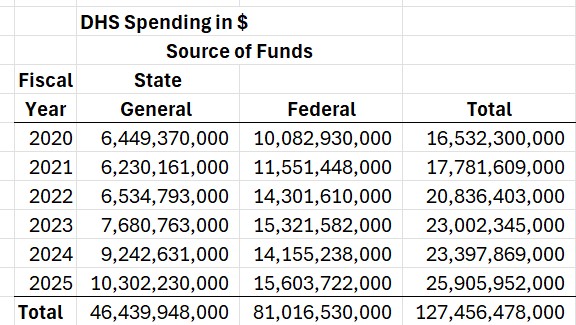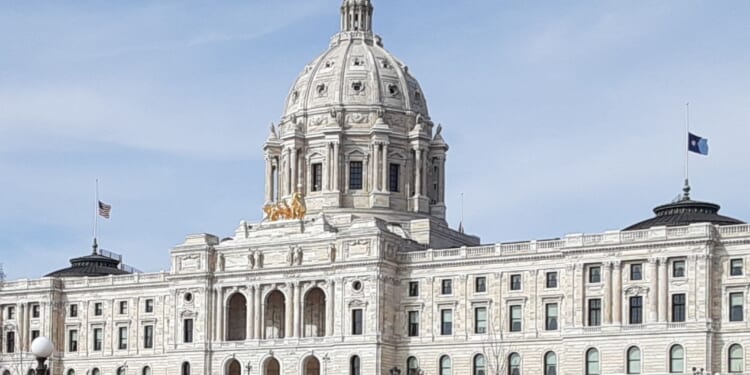But how much? Estimates range above $6 billion (with a “b”) just for the state Dept. of Human Services (DHS).
“Human services” competes with the general category of “education” to represent the biggest share of the state budget. Here’s how much money DHS has spent during the Tim Walz administration,

I’ve only included the two biggest sources of funds, the state general fund and federal dollars. DHS spends lots of other money, from other sources (all ultimately coming from taxpayers).
But for the first six years, the Walz DHS total comes in above $127 billion.
An anonymous DHS-employee run Twitter (X) account puts the Walz DHS fraud estimate at $6.5 billion. They write,
We are now revising Minnesota DHS fraud predictions to exceed $6.5 billion from 2019 onward. This includes contracts/grants & Medicaid.
Is such a number even plausible? Consider that $6.5 billion would represent about 5 percent of the money spent by DHS between July 1, 2019, and June 30, 2025.
As it happens, that 5 percent level corresponds exactly with national estimates for “improper payments” from Medicaid/Medicare. How much of “improper” corresponds to “waste fraud or abuse” or fraud alone vs. mere error would require a great deal more investigation.
In reference to DHS spending, we used the word “budget” above. In the world of DHS, there is no “budget” as we would understand the term. For the most part, DHS administers “entitlement” programs, where recipients or vendors get the money, if they qualify, regardless of whether any “budget” (estimate) is exceeded. If DHS blows by the budget, they just pay out the money and count on the state treasury figuring out the implications later.
DHS as an entity is so complex, it takes a “budget” document nearly 900 pages long just to describe it.
In the previous 504-page document prepared for the FY22-23 DHS budget cycle, the word “fraud” does not appear.
In that 877-page document describing the FY24-25 DHS budget, the word “fraud” appears nine (9) times.
In the newer FY26-27 DHS budget document (a mere 478 pages), the word “fraud” appears 106 times.
Close enough for government work.










